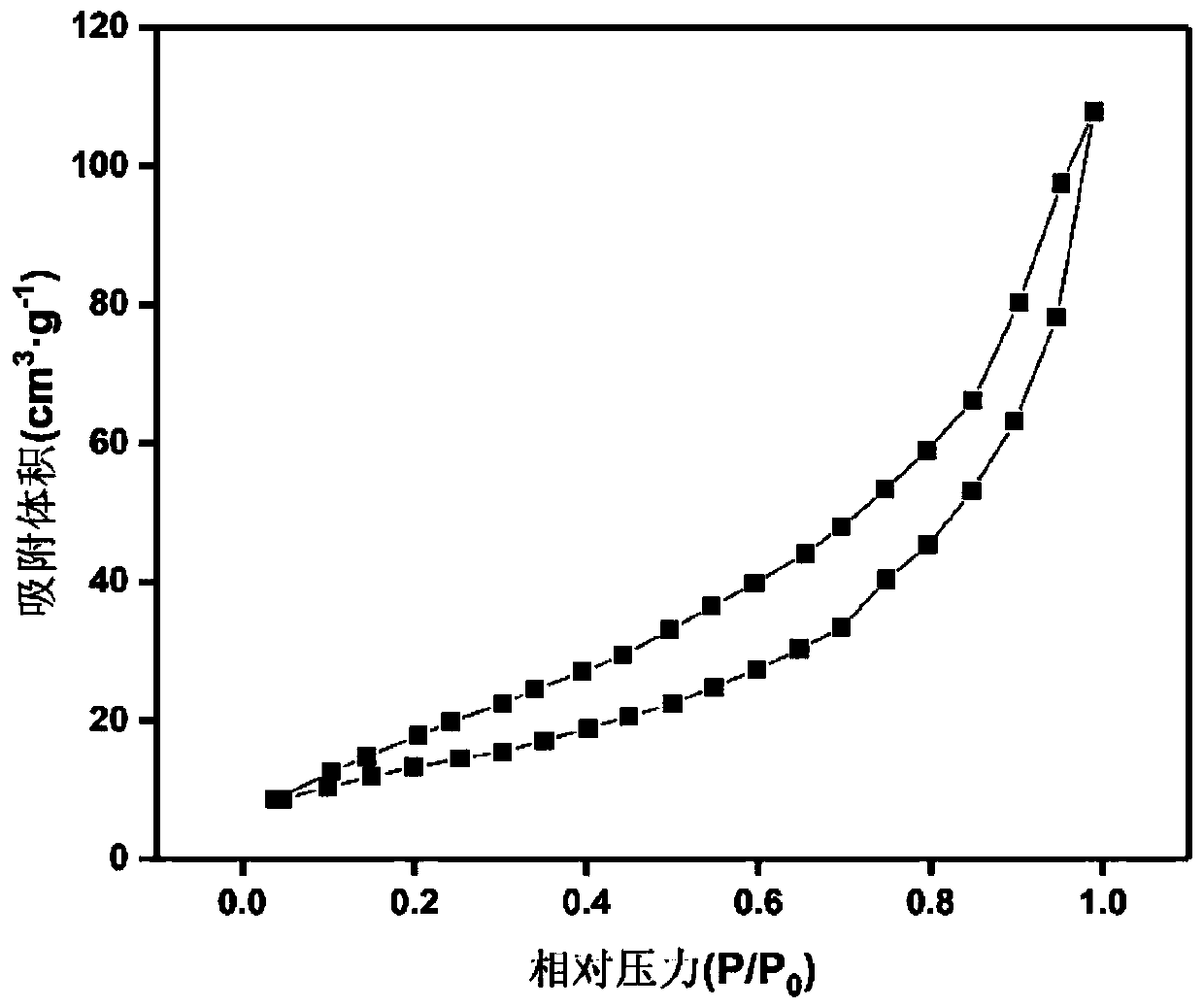W18O49 modified polymer composite nanofiber membrane, preparation method thereof and application of W18O49 modified polymer composite nanofiber membrane in degrading organic pollutants
A technology of composite nanofibers and nanofiber membranes, applied in water pollutants, water/sludge/sewage treatment, alkali metal compounds, etc., can solve the problems of limited operability and practical application, easy agglomeration of nanoparticles, and limited photocatalysis. Degradation efficiency of organic pollutants and other issues, to achieve the effect of improving operability and practical application, easy availability of raw materials, improving adsorption effect and photocatalytic ability
- Summary
- Abstract
- Description
- Claims
- Application Information
AI Technical Summary
Problems solved by technology
Method used
Image
Examples
Embodiment 1
[0032] (1) Dissolve polymethyl methacrylate (PMMA) in N,N-dimethylformamide, heat and stir at 70°C until completely dissolved, and prepare a polymethyl methacrylate solution with a mass fraction of 20 wt%. ,;
[0033] (2) Put the electrospinning precursor suspension into the syringe of the electrospinning equipment, the diameter of the stainless steel needle of the syringe is 1mm, the working voltage of the electrospinning equipment is 20kV, the stainless steel needle is used as the anode, and the flat aluminum foil is used as the On the cathode receiving plate, the advancing speed of the syringe is 0.5mL / h, and the distance between the poles is 17cm; Electrospinning is carried out for 5h to obtain a polymethyl methacrylate nanofiber film on the receiving plate; then the nanofiber film is placed under vacuum at 55°C Dry to remove solvent;
[0034] (3) immerse the nanofibrous membrane that 0.1g step (2) obtains in the ethanolic solution of 60mL, 30mmol / L tungsten hexachloride,...
Embodiment 2
[0038] (1) Dissolving polyacrylonitrile (PAN) in N,N-dimethylformamide, heating and stirring at 65° C. until completely dissolved, and preparing a polymer solution with a mass fraction of 12 wt %;
[0039] (2) Put the electrospinning precursor suspension into the syringe of the electrospinning equipment, the diameter of the stainless steel needle is 1mm, the working voltage of the electrospinning equipment is 20kV, the stainless steel needle is used as the anode, and the flat aluminum foil is used as the cathode to receive , the advancing speed was 0.5mL / h, and the distance between the poles was 17cm; electrospinning was carried out for 5h to obtain a polyacrylonitrile nanofiber membrane; then the nanofiber membrane was dried under vacuum at 55°C to remove the solvent;
[0040] (3) Immerse 0.1g nanofibrous membrane in 60mL of 25mmol / L tungsten hexachloride ethanol solution, transfer the whole system to a stainless steel reaction kettle with polytetrafluoroethylene liner, at 180...
Embodiment 3
[0044] (1) dissolving polyacrylonitrile (PAN) in N,N-dimethylformamide, heating and stirring at 50° C. until completely dissolved, and preparing a polyacrylonitrile solution with a mass fraction of 9 wt %;
[0045] (2) Put the electrospinning precursor suspension into the syringe of the electrospinning equipment, the diameter of the stainless steel needle is 1mm, the operating voltage of the electrospinning equipment is 15kV, the stainless steel needle is used as the anode, and the plane aluminum foil is used as the receiving electrode , the propulsion speed was 0.5mL / h, and the distance between the poles was 17cm; electrospinning was carried out for 5h to obtain a PAN nanofiber membrane; then the nanofiber membrane was dried under vacuum at 55°C to remove the solvent;
[0046] (3) Immerse 0.1g nanofibrous membrane in 60mL of 15mmol / L tungsten hexachloride ethanol solution, transfer the whole system to a stainless steel reactor with polytetrafluoroethylene liner, and react at 1...
PUM
 Login to View More
Login to View More Abstract
Description
Claims
Application Information
 Login to View More
Login to View More - R&D
- Intellectual Property
- Life Sciences
- Materials
- Tech Scout
- Unparalleled Data Quality
- Higher Quality Content
- 60% Fewer Hallucinations
Browse by: Latest US Patents, China's latest patents, Technical Efficacy Thesaurus, Application Domain, Technology Topic, Popular Technical Reports.
© 2025 PatSnap. All rights reserved.Legal|Privacy policy|Modern Slavery Act Transparency Statement|Sitemap|About US| Contact US: help@patsnap.com



